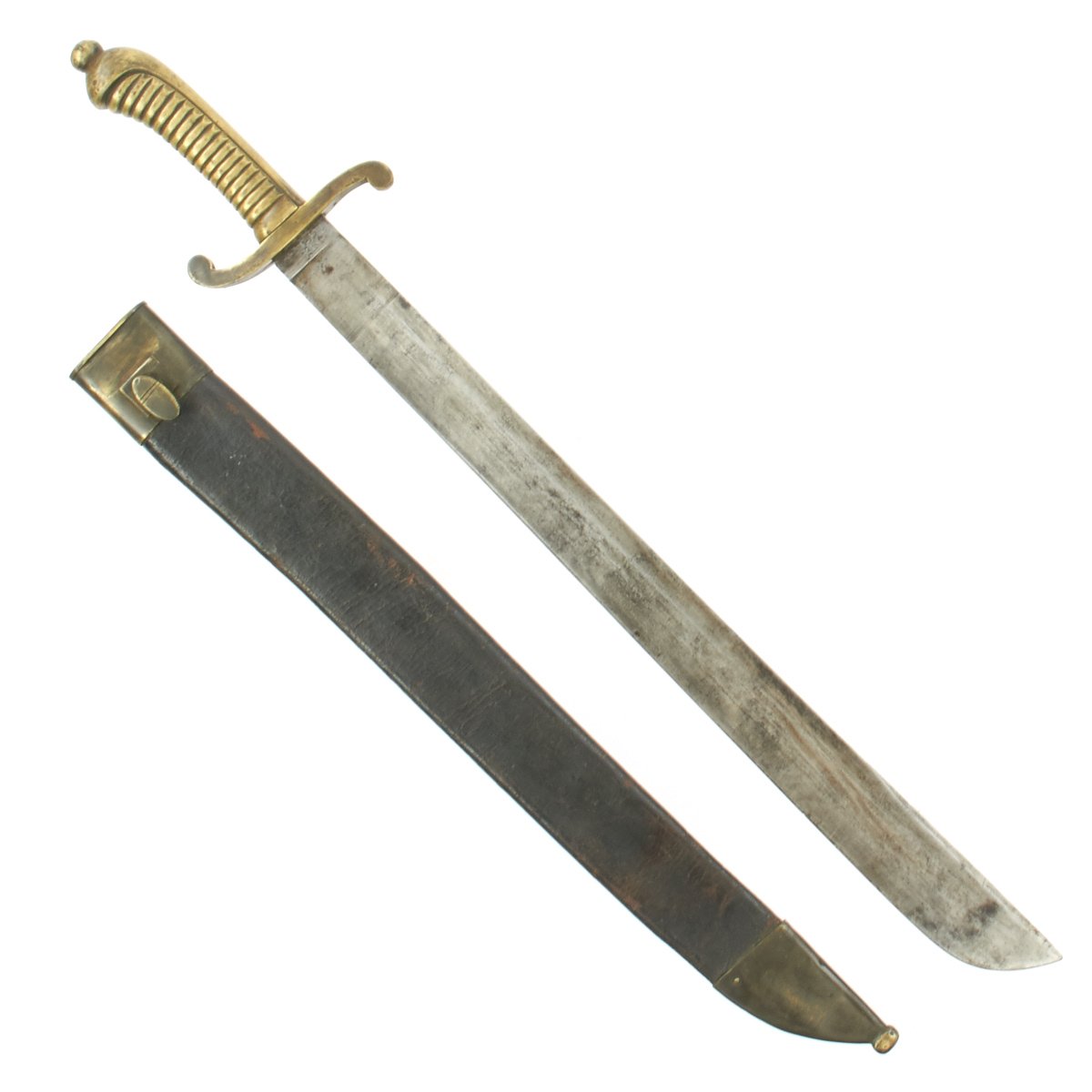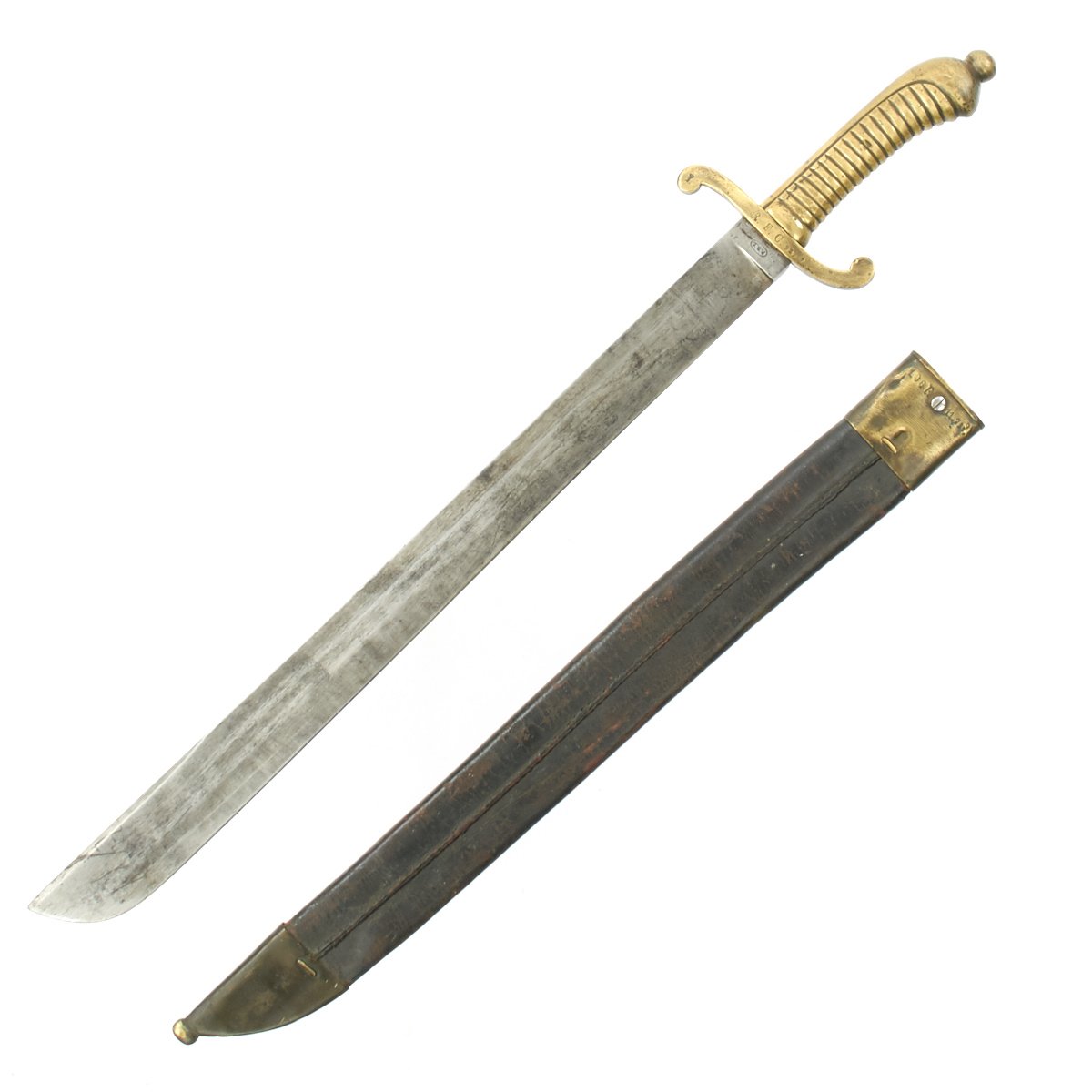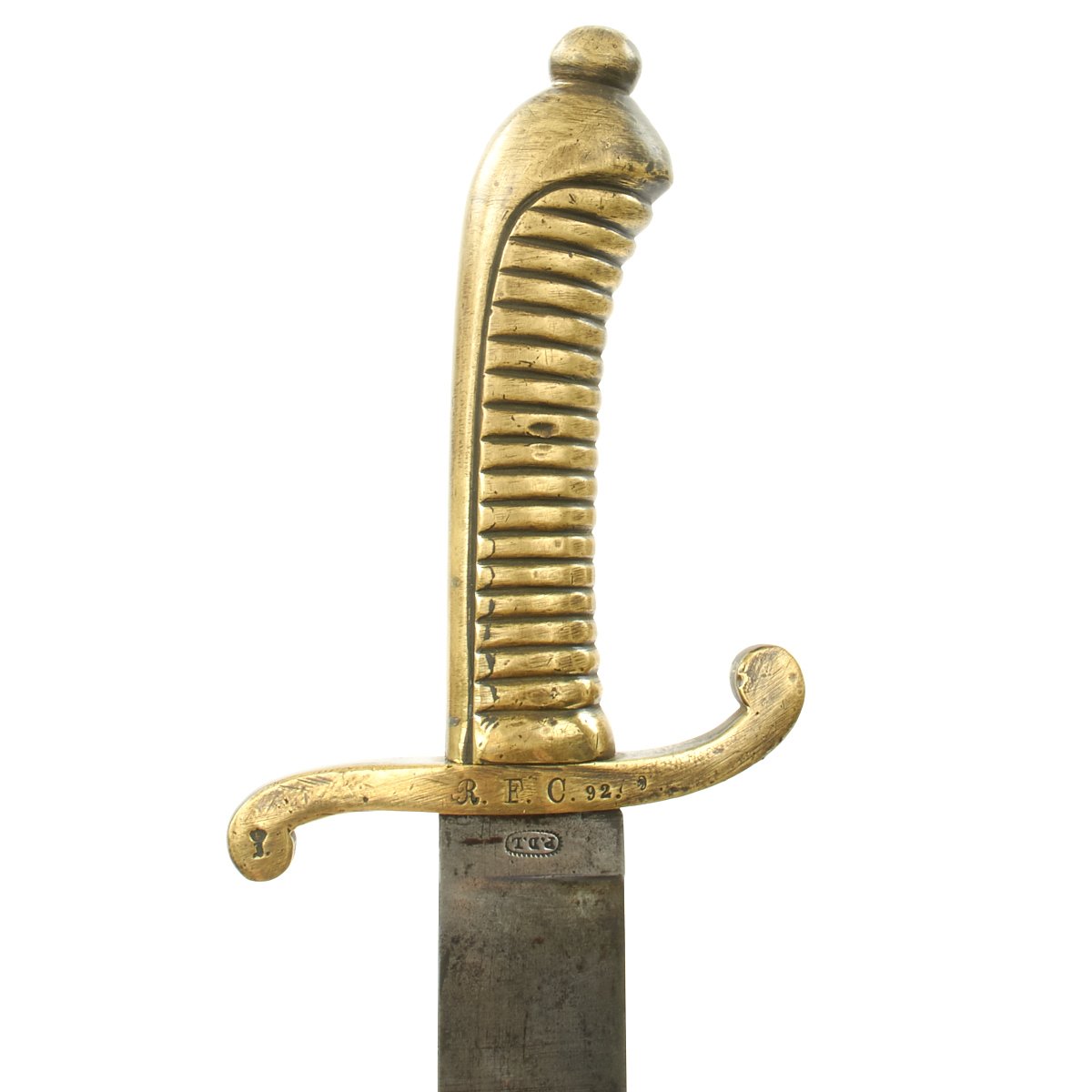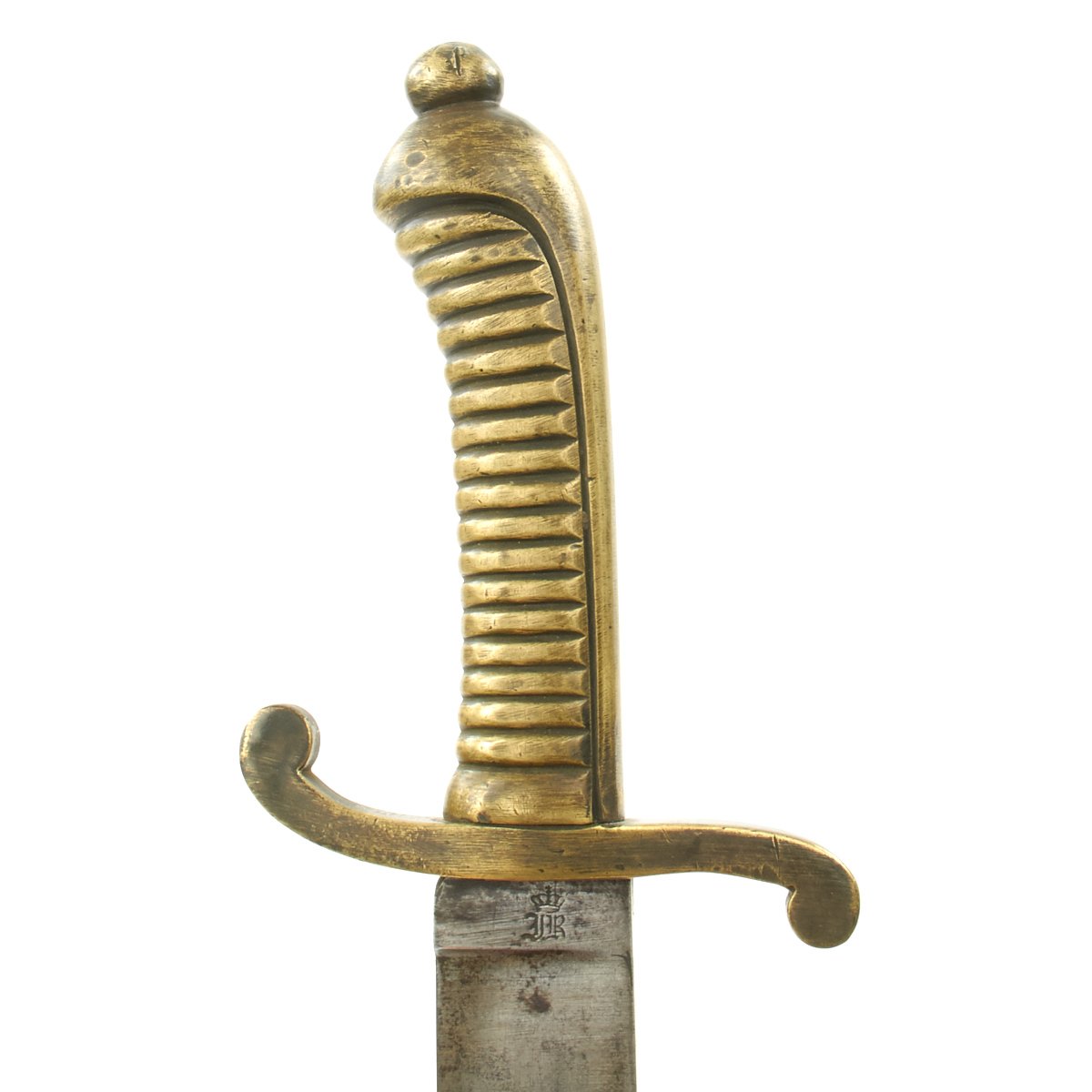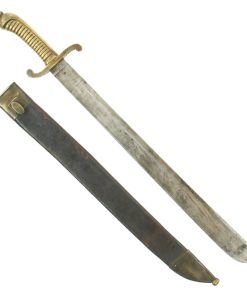Original German 19th Century Saxon M.1840 Faschinenmesser Pioneer Short Sword with Scabbard – Regiment Marked Original Items
$ 395,00 $ 118,50
Original Item: Only One Available. These are the traditional Sidearms of SAXONY, one of the independent German City States that existed prior to the unification of Germany under Bismark in 1871. Each State had it’s own characteristic sidearms, this Faschinenmesser Sword was one used by Saxony. The 24 1/4 long sword has a large Cleaver shaped blade of 18 1/4″ mounted onto an all brass ribbed grip bag shaped hilt with a brass “S” cross guard. The name itself translates to “Fascine Knife”, and the design is intended both for defense an as a tool for cutting “fascines”. These are bundles of sticks and brush used to strengthen trenches, walking paths, and other types of earthen work found on the battlefield. They are the predecessor of the heavy sawback pioneer swords and bayonets used in WWI.
The brass cross guard on our example still bears it’s original regimental markings:
R. F. C. 92. 70
This designation is one that we are not familiar with, though the stylized “R” usually indicates that it is for a reserve unit. This is probably not the original unit designation, and was probably added at some later time when the sword was removed from front line service.
The brass throat of the scabbard bears a different regimental designation:
106. R. 11. 219.
This designation represents the 106th (7th Royal Saxon) Infantry “King George” Regiment, 11th battalion, 219th man. This group was raised on 2 June 1708 and garrisoned at Leipzig, later part of the XIX Army Corps. This indicates that this Faschinenmesser saw service after 1871, as this is an Imperial German Army designation. This is typical of the early empire, as most local units kept their characteristic uniforms and sidearms.
The sword is in very good condition, probably the best example that we have had thus far. The original blade markings are clear, with a Bavarian Royal monogram that appears to say LB under a crown, probably for Ludwig II. The reverse ricasso has P. D. L. inside a n oval of dots, the maker marking for P. D. Lüneschloss, Fabrik blanker Waffen, located in the legendary blade-making city of Solingen. The company was founded in 1810 by Peter Daniel Lüneschloss, and existed well into the post WWII period.
The blade does not have any major pitting or other issues, with just a few small dents on the edge. It has some staining overall from age, but is quite attractive. The hilt is tight on the blade, with no play at all, and bears additional proof marks.
The original black leather brass mounted scabbard has lost some of the finish, but is still in solid condition. The leather is still relatively soft, with no major damage, and the brass fittings have a lovely patina. The scabbard has shrunk a bit over the years, so it is now about 3/8″ too short for the blade.
A very nice example of the predecessor to many machetes and other pioneer blades, ready to display!
Fast Shipping with Professional Packaging
Thanks to our longstanding association with UPS FedEx DHL, and other major international carriers, we are able to provide a range of shipping options. Our warehouse staff is expertly trained and will wrap your products according to our exact and precise specifications. Prior to shipping, your goods will be thoroughly examined and securely secured. We ship to thousands clients each day across multiple countries. This shows how we're dedicated to be the largest retailer on the internet. Warehouses and distribution centres can be located throughout Europe as well as the USA.
Note: Orders with more than one item will be assigned a processing date depending on the item.
Before shipping before shipping, we'll conduct a thorough inspection of the items you have ordered. Today, the majority of orders will be delivered within 48 hours. The delivery time will be between 3-7 days.
Returns
The stock is dynamic and we cannot completely manage it because multiple stakeholders are involved, including our factory and warehouse. So the actual stock may alter at any time. It's possible that you may not receive your order once the order has been made.
Our policy is valid for a period of 30 days. If you don't receive the product within 30 days, we are not able to issue a refund or an exchange.
You can only return an item if it is unused and in the same state as the day you received it. You must have the item in its original packaging.
Related products
Uncategorized
Uncategorized
Uncategorized
Uncategorized
Uncategorized
Uncategorized
Uncategorized
Armored Burgonet Helmet & Polearm from Scottish Castle Leith Hall Circa 1700 Original Items
Uncategorized
Band of Brothers ORIGINAL GERMAN WWII Le. F.H. 18 10.5cm ARTILLERY PIECE Original Items
Uncategorized
Uncategorized
Uncategorized
Uncategorized
Uncategorized
Uncategorized
Uncategorized
Uncategorized
Uncategorized
Australian WWII Owen MK1 Machine Carbine SMG Custom Fabricated Replica with Sling Original Items
Uncategorized
Uncategorized
